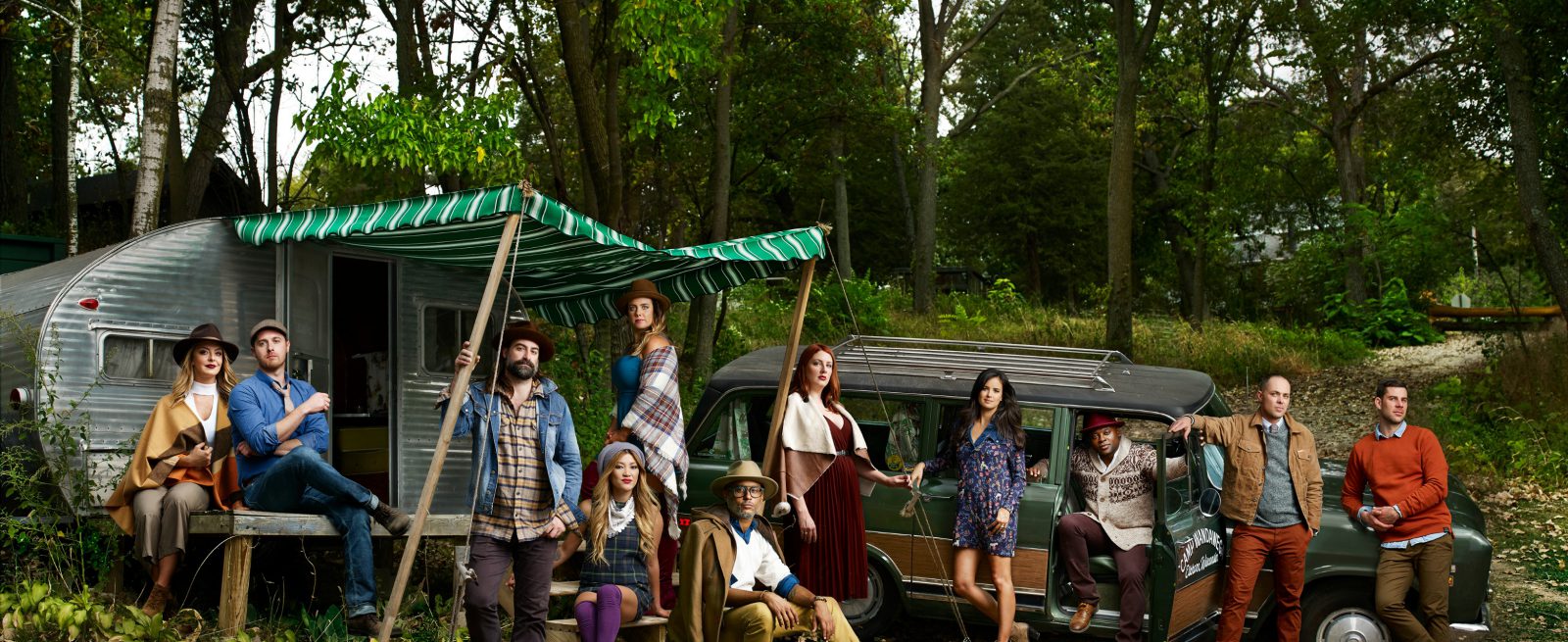Timeless Spirits On Trend
10 Min Read By MRM Staff
Classic cocktails —those that continue to shine with longevity through the decades — have been sweeping cocktail menus across the country this year and will continue to make even more noise in 2018, according to the Bacardi Trade Advocacy U.S Team of Portfolio Ambassadors.
While the overall wine category continues to grow, sparkling wine is showing some of the strongest growth rates, said Eric Hemer, Southern Glazer’s Wine & Spirits Senior VP and Director of Wine Education.
Timeless cocktails are the drinks that over the years continue to be the go-to tipples that never fail to entice and satisfy, even with the endless stream of top-notch contemporary cocktails out there. Simply put, they are delicious drinks that will always be a crucial component to the cocktail playbook. Here are some examples.
FRENCH 75: Colin Asare-Appiah, East Senior Portfolio Ambassador
The French 75 is a graceful timeless classic with a kick. Like many cocktails created in yesteryear, its origins are confusing but there is no confusing that it has been around for generations for a reason, probably for the subtle jolt it gives to the unsuspecting drinker. The popularity of the cocktail spread at Harry’s Bar in Paris where gin was the featured spirit, but traditionally it was made with cognac, fresh lemon juice and brut champagne and to me it has stood the test of time.
2 parts D’USSE ® cognac
.5 parts lemon juice
.25 part simple syrup
3 parts Brut champagne
Method: Combine cognac, syrup, and lemon juice in a cocktail shaker filled with ice. Shake vigorously and strain into an iced champagne glass. Top up with champagne. Stir gently. Garnish: long lemon twist
The Piña Colada has a robust and colorful history surrounding its creation and the exact recipe. It ranges from the 1820s to the 1950s replete with a laundry list of names attached to its Caribbean evolution. But one thing remains true, there isn’t a day of the week, month of the year, or time of your life when a frosty cold Pina Colada isn’t exactly the cocktail you’re looking for. One of my favorite ways to enjoy this timeless cocktail and that makes it even more delicious, refreshing and timeless is carbonating the drink for a little fizz. Get yourself the iconic BACARDÍ OCHO rum, a bottle of coconut water, a soda siphon, and shake yourself up a carbonated Piña Colada — the cocktail that is perfect any time, all of the time.
1 part BACARDÍ OCHO
.5 part BACARDÍ Coconut Flavored rum
1 part fresh pineapple juice, strained
3 parts coconut water
.25 tsp citric acid
.75 parts sugar syrup
Method: For a classic Piña Colada, combine all ingredients into a blender and mix until frothy. For a fizzy spin, chill all ingredients then pour into soda siphon. Cap and seal siphon, charge siphon with one CO2 soda charger and shake vigorously to incorporate and carbonate. Stream cocktail from siphon into an ice filled hurricane glass.
Garnish with a pineapple fan.
France and Italy, two cultures that treat food as a religion and celebrate the occasion of The Spritz, the pre-meal beverage like no other. Whether called an Aperitif or Aperitivo, The Spritz is a timeless reflection of the local Italian & French palate and celebratory occasions with friends and family. It has transcended time, and in my mind, is the original “happy hour” classic. There is no better time than gathering to enjoy the company of good friends with great food and drinks, and this low ABV refresher says, “we’re in this together.”
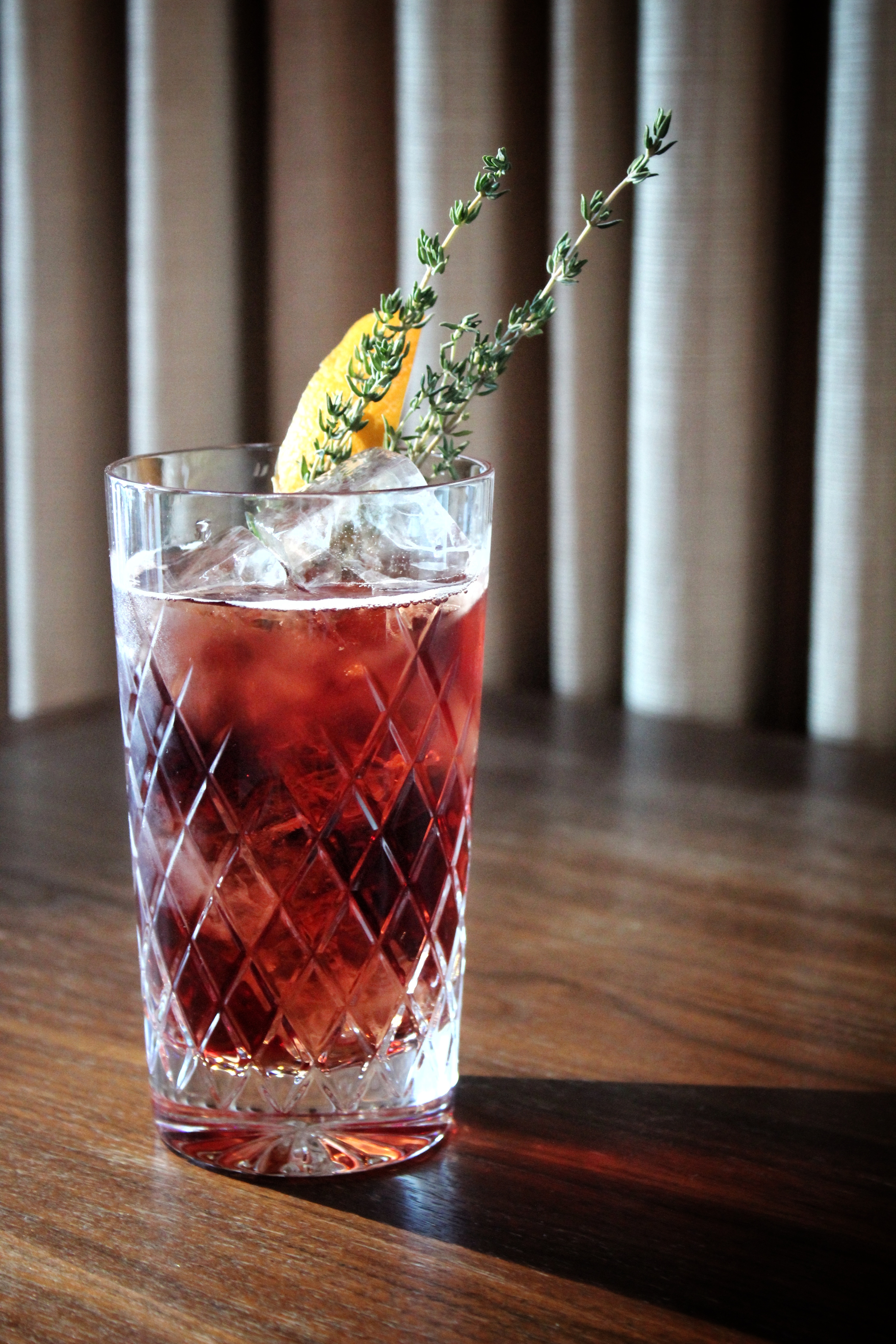
MARTINI® AMBRATO SPRITZ
1.5 parts MARTINI & ROSSI Riserva Rubino
2 parts MARTINI & ROSSI Prosecco
2 parts sparkling water
Garnish: orange twist + oregano bouquet
50/50 MARTINI: Jaymee Mandeville, West Senior Portfolio Ambassador
As I think of a “timeless” cocktail I think of a martini, of course. Everyone has his or her own preference; whether it be shaken or stirred, with a twist or an olive…it’s a drink that identifies someone in a certain fashion. Whether it is midday, before a glorious dinner or long into the evening, I drink mine as a 50/50. Low proof and aperitifs are coming back in style, and vermouth never left the party but today, is definitely stepping more into the spotlight. In this expression, it celebrates simplicity and elegance in a cocktail that you can keep coming back to over and over, year after year.
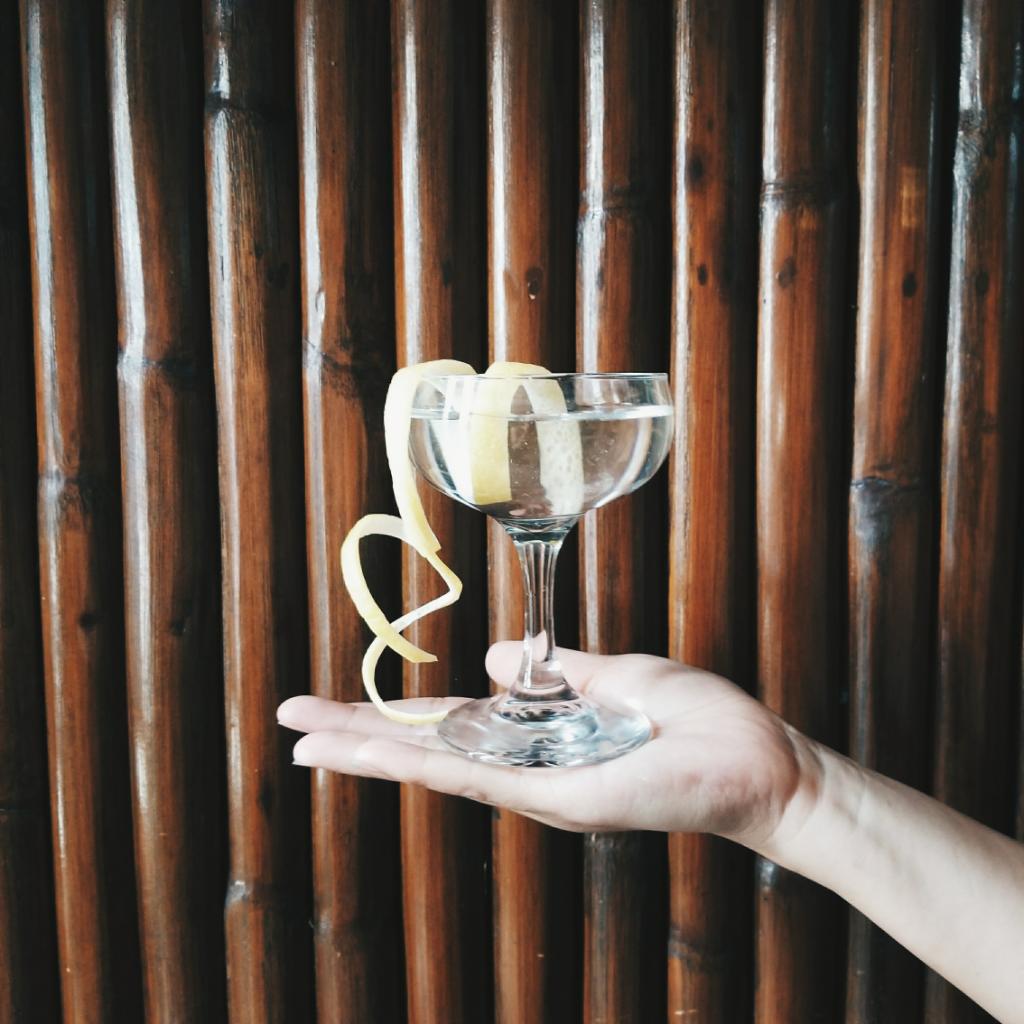 50/50 MARTINI
50/50 MARTINI
1.75 parts BOMBAY® gin
1.75 parts NOILLY PRAT® Dry vermouth
Method: In a mixing glass, stir spirits over ice, strain into a coupe glass
Garnish with a lemon twist
THE NEGRONI: Chris Hopkins, National Accounts Portfolio Ambassador
Over the last year I have seen a continued rise in the timeless Negroni cocktail. Sustaining this growth is the emergence of many new options within the aperitivo/bitter category and a large variety of interpretations appearing on menus across the country. With the recent launch of MARTIN & ROSSI® Riserva Speciale Bitter, I am looking forward to seeing how the best bartenders across the country will be using the entire new MARTIN & ROSSI Riserva line to create their own version of this classic, equal parts, recipe.
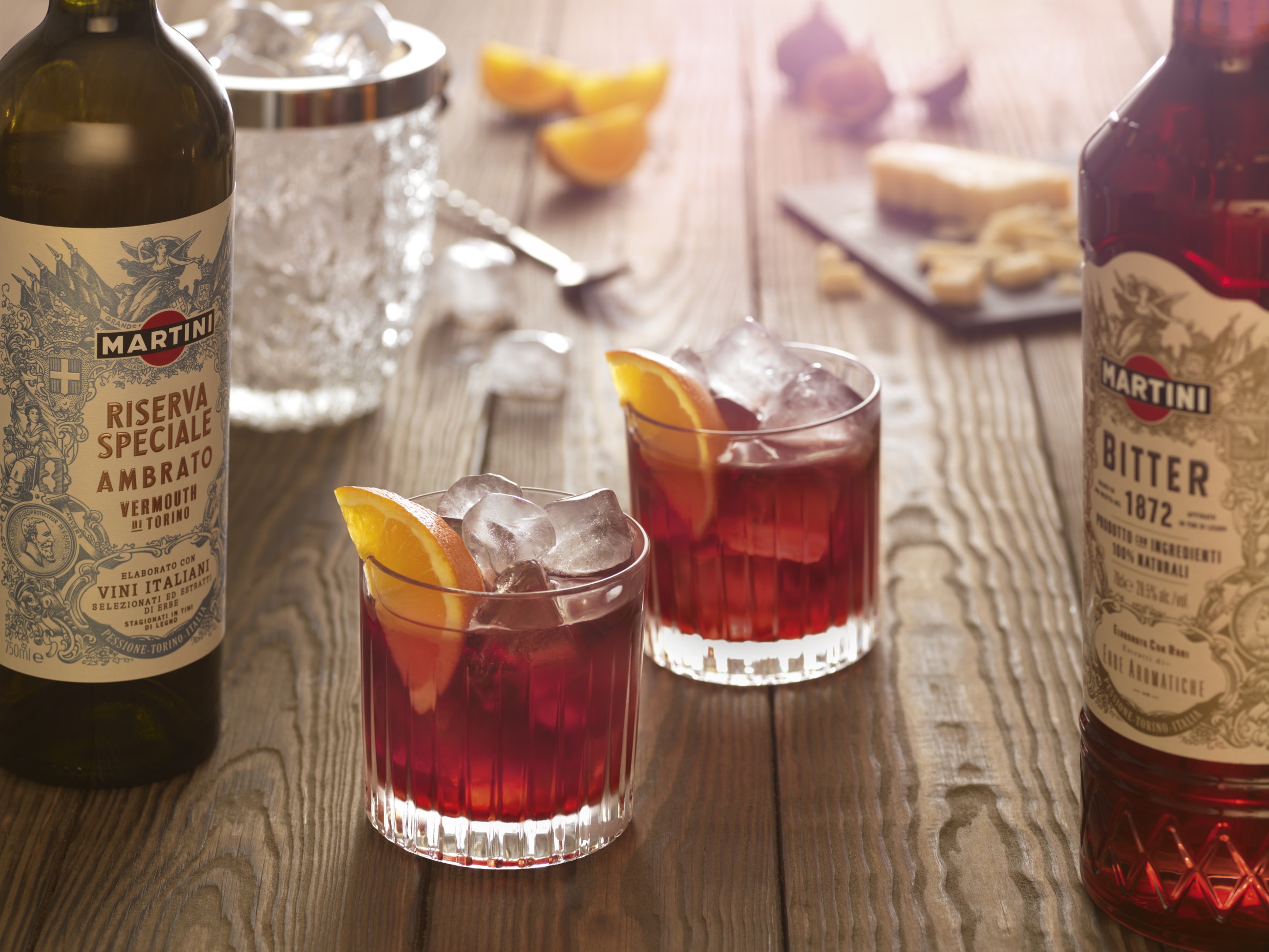
MARTINI & ROSSI NEGRONI
1 part OXLEY Gin
1 part MARTIN & ROSSI Riserva Speciale Bitter
1 part MARTIN & ROSSI Riserva Speciale Rubino
Method: Combine ingredients and stir until chilled and diluted. Strain over cubed ice into Double old-fashioned glass.
Garnish with an orange slice.
CAMERON’S KICK PUNCH: Anna McLoughlin, New York Portfolio Ambassador
My timeless cocktail is a Cameron’s Kick. This cocktail falls into one of my favorite categories: the punch. Punch sits directly between the stirred, spirit forward cocktails and the refreshing highball. It’s perfect for when you are in the mood for something refreshing but with a bit of a “kick.” Pun intended. The Cameron’s Kick is timeless for several reasons. First, it’s incredibly simple. At its core, it’s only a dressed up whiskey sour. Second, it has equal parts Scotch and Irish whisk(e)ys. Like a mother who would never pick a favorite child, I will never be able to choose which style of whisk(e)y I love over the other. While both are notoriously challenging to use in cocktails, the soft sweetness of the Irish whiskey rounds off the smoky edge of the Scotch and they play off of each other beautifully. Classic and never out of style!
CAMERON’S KICK
1.5 parts DEWAR’S® 12 Blended Scotch Whisky
1.5 parts TEELING® Small Batch Irish Whiskey
.75 part lemon juice
.5 part orgeat
Method: Combine ingredients in a cocktail shaker, shake, fine strain into a punch glass with a large chunk of ice
Garnish with nutmeg or orange oils.
THE HIGHBALL: Duane Fernandez, Houston Portfolio Ambassador
Simplicity is key to life! Cocktail creativity invokes imagination, passion and time. Although the process may be rewarding, we are most at peace when we can relax and let our mind go free from the everyday hustle. What better way to kick back then to indulge in a simple, timeless, cocktail then the two-ingredient highball. So many variations, but my favorite is the classic & Old Hollywood Gin & Tonic.
BOMBAY GIN & TONIC
1.5 parts BOMBAY Sapphire East gin
Bittercube Tailor Made Tonic
Method: Pour gin into ice filled highball and top of with tonic.
Garnish with a lemon wheel and rosemary
MAI TAI: Areina Thomas, San Francisco Portfolio Ambassador
There are numerous cocktails that have stood out in my memory bank over the years, but there is one cocktail that is truly timeless for me — the Mai Tai. I began to try to make sense of cocktails as a child on vacation with parents that drank Mai Tai’s on the beaches of Hawaii during sunset. It was always a ritual for them and became emblematic of our time in the tropics. It made sense that whenever there was a Mai Tai in one of their hands, we were on vacation and that life was easy and great. Years passed, I grew up, I moved to San Francisco, and on a grey day walked into a well-known tiki bar naturally ordering a Mai Tai. To my surprise, this cocktail was wildly different than the Mai Tai’s I’d tried before. While the original Mai Tai, born in 1944, was the cocktail recipe I have known and loved, this version was new and fascinating to me – a perfect introduction to adulthood and a new life in San Francisco. Nutty, slightly bitter, citrusy, funky, balanced, and delicious —connecting me in a whole new way to my nostalgia of the past and this new life I was making for myself. For those times that I want to bring the aloha into my life and embrace a great day over a cocktail, regardless of whether or not I’m on a beach, this is what I’ll be drinking.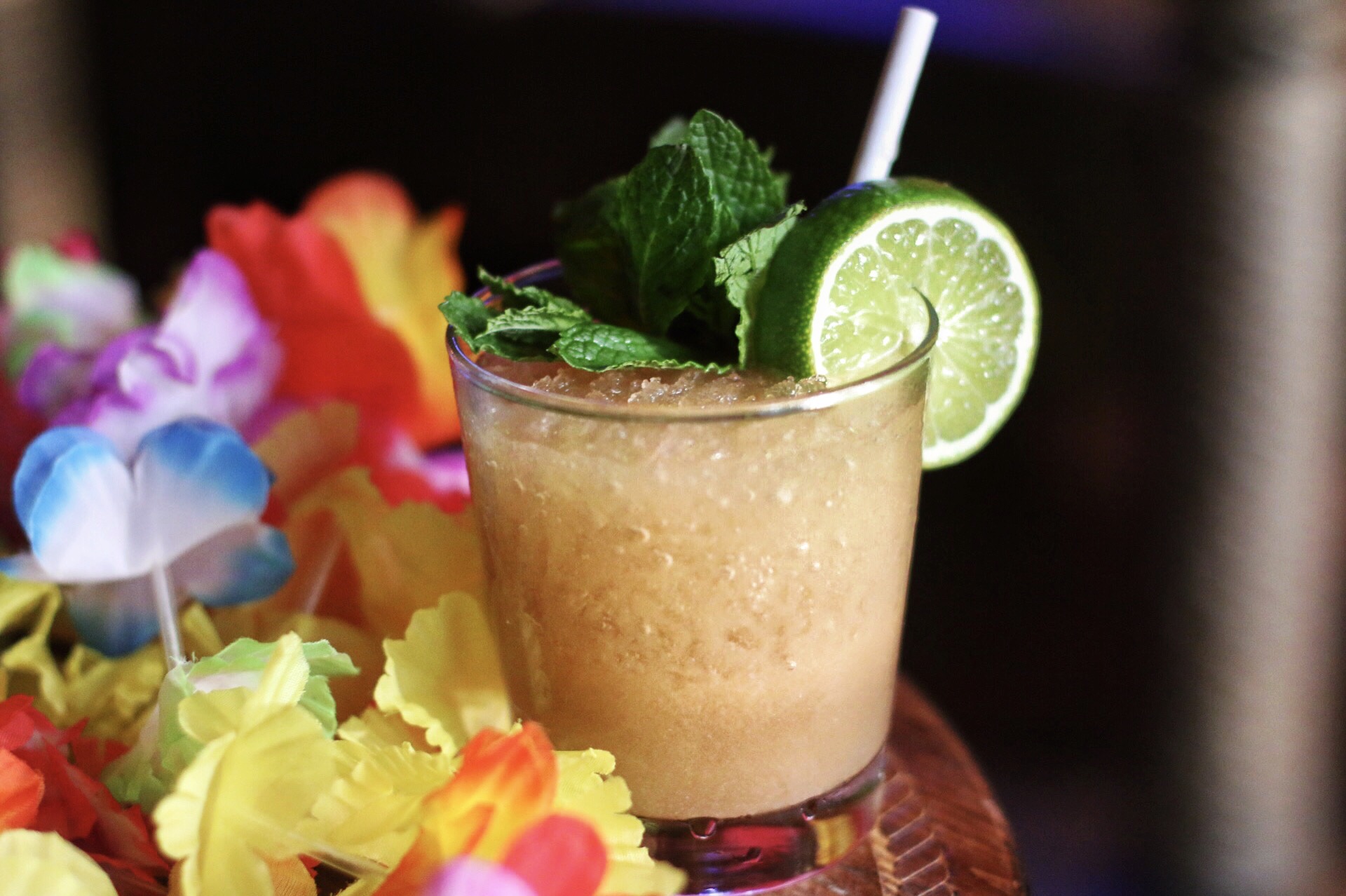
MAI TAI
1.5 parts. BANKS® 7 Island rum
.5 part. SANTA TERESA® 1796 rum
.75 part fresh lime juice
.5 part orange curacao
.25 part orgeat
.25 part Rich Demerara Simple Syrup
Method: Combine all ingredients in a crushed iced shaker and until the tin is frosted. Pour contents of the tins into a double rocks glass.
Garnish with half of a lime and a fresh sprig of mint.
BOBBY BURNS: Taylor Hansen, Chicago Portfolio Ambassador
A strong believer that a well-balanced Manhattan can solve most of the world’s problems, flipping the script and using a feathery and elegant single-malt such as CRAIGELLACHIE® 13 presents a welcome opportunity for foreign relations to truly thrive. Taking a step back from overpowering vermouth by integrating Ambrato opens the door for the Scotts to be the star of the show, basking comfortably in the company of its Italian and French entourage. Timeless and delicious, The Bobby Burns is my everlasting, go-to cocktail I’ve recently seen popping up everywhere in Chicago.
BOBBY BURNS
2 parts CRAIGELLACHIE 13 Speyside Single Malt Scotch Whisky
1 part MARTINI & ROSSI Riserva Speciale Ambrato
.25 part BENEDICTINE®
2-Dashes Angostura (aromatic) Bitters
Method: In a mixing glass, stir spirits over ice, strain into a coupe glass
Garnish with a luxardo cherry
MARTINI AMBRATO + TONIC: Hillary Jaroschy, South Florida Portfolio Ambassador
Not only am I naturally drawn to vermouths, the new MARTINI & ROSSI Reserva Speciale line of vermouth di Torino are absolutely gorgeous and a perfect fit for the low alcohol movement. Since I’m transitioning towards a family life, low alcohol drinks are a great way to incorporate cocktails into my busy, all day schedule where I can enjoy a few and still accomplish my goals. It’s also a great option for the year round heat Miami experiences. Light and refreshing, this cocktail is cooling and fizzy during the Miami heat, and never fails. You can’t go wrong with an Ambrato and Tonic. And since the new line of MARTINI & ROSSI Reserva Speciale vermouths are the first permanent release in over 25 years from the MARTINI & ROSSI family, I see this cocktail not only growing in popularity, but also standing the test of time.
MARTINI AMBRATO + TONIC
2 parts MARTINI & ROSSI Reserva Speciale Ambrato Vermouth di Torino
2 parts Fever Tree Indian Tonic Water
Method: Combine Ambrato vermouth and tonic water over ice in a wine glass and stir gently to combine.
Garnish with a wide lemon peel and your herb sprig of choice if desired.
The Sparkly Stuff
As consumers’ love affair with sparkling wine gears up during the holiday season, Southern Glazer’s Wine & Spirits – the largest North American wine and spirits distribution company – offers a bubbly tutorial from the company’s top wine educator, Eric Hemer.
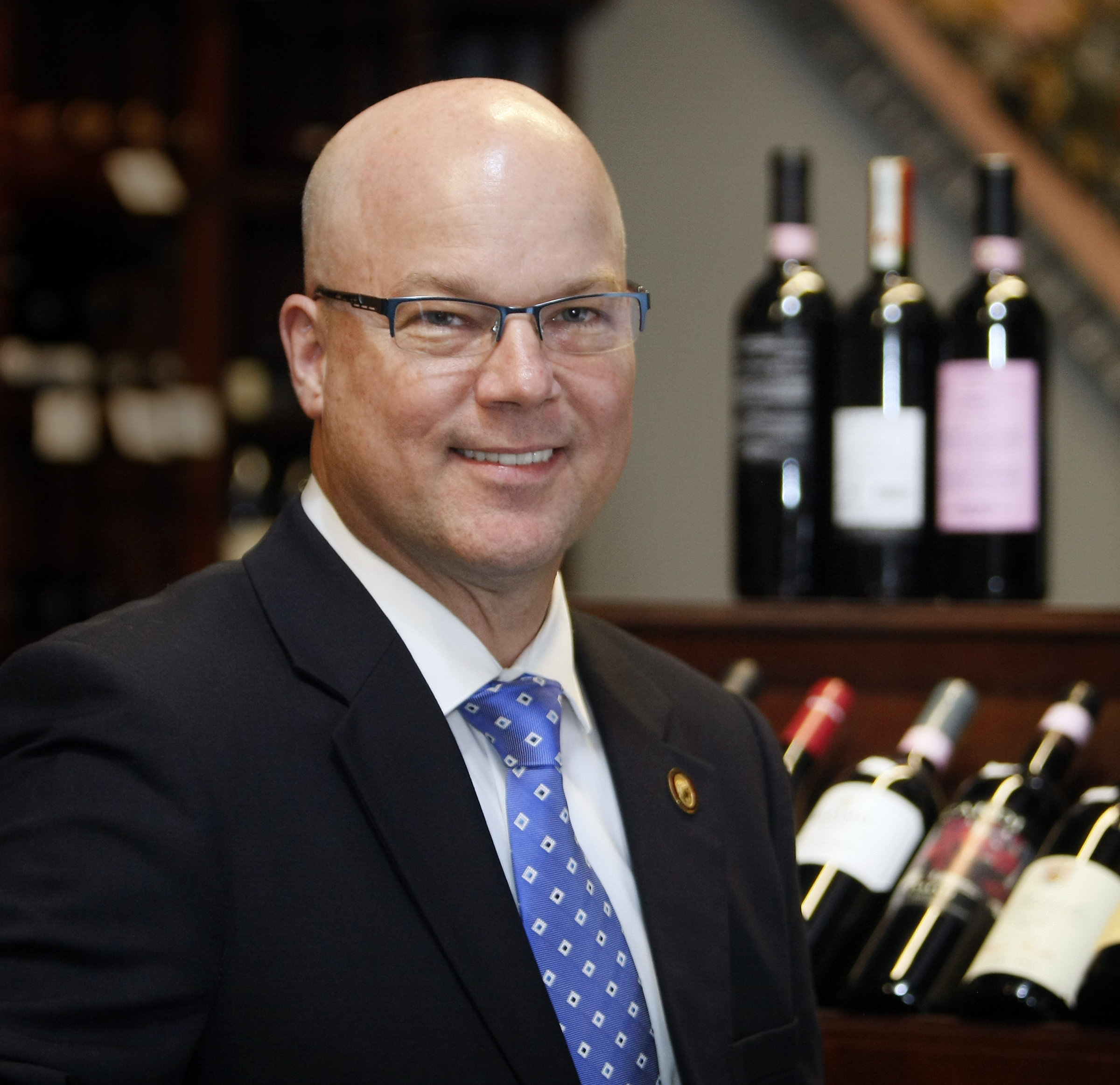
“Not surprisingly, sparkling sales are strongest in the fourth quarter driven by holiday celebrations and gift-giving,” said Hemer. “Whether consumers are looking to host a holiday party at home, celebrate at their favorite restaurant or bar, or purchase a gift that is sure to please, sparkling wine is a festive beverage choice that will easily enhance any occasion, at every budget.”
Champagne-France
As the saying goes, “Not all sparkling wine is Champagne, but all Champagne is sparkling wine.” The most complex, expressive, compelling, historic and typically costliest example of sparkling wine comes from the cool climate and chalky soils of the Champagne region of northern France. By law, Champagne may be made singly or in a blend of the black grapes Pinot Noir and Meunier, and the white grape Chardonnay.
Most Champagne is made from a blend of the three grapes and is labeled Champagne Brut Non-Vintage (NV). For those who may feel like splurging a bit this holiday season, look for vintage dated Champagne, which is aged longer in the bottle for additional complexity and richness. Champagne prices start around $40 and run up to several hundred dollars for Cuvée Prestige wines. In French regions beyond Champagne, the term Crémant is used to indicate a wine made by the Classic Method. These wines offer very good value and quality too. Look for Crémant de Bourgogne (Burgundy), as well as Crémant d’Alsace, Crémant de Loire, and Crémant de Limoux, in the south of France. These wines typically retail for $15 to $25.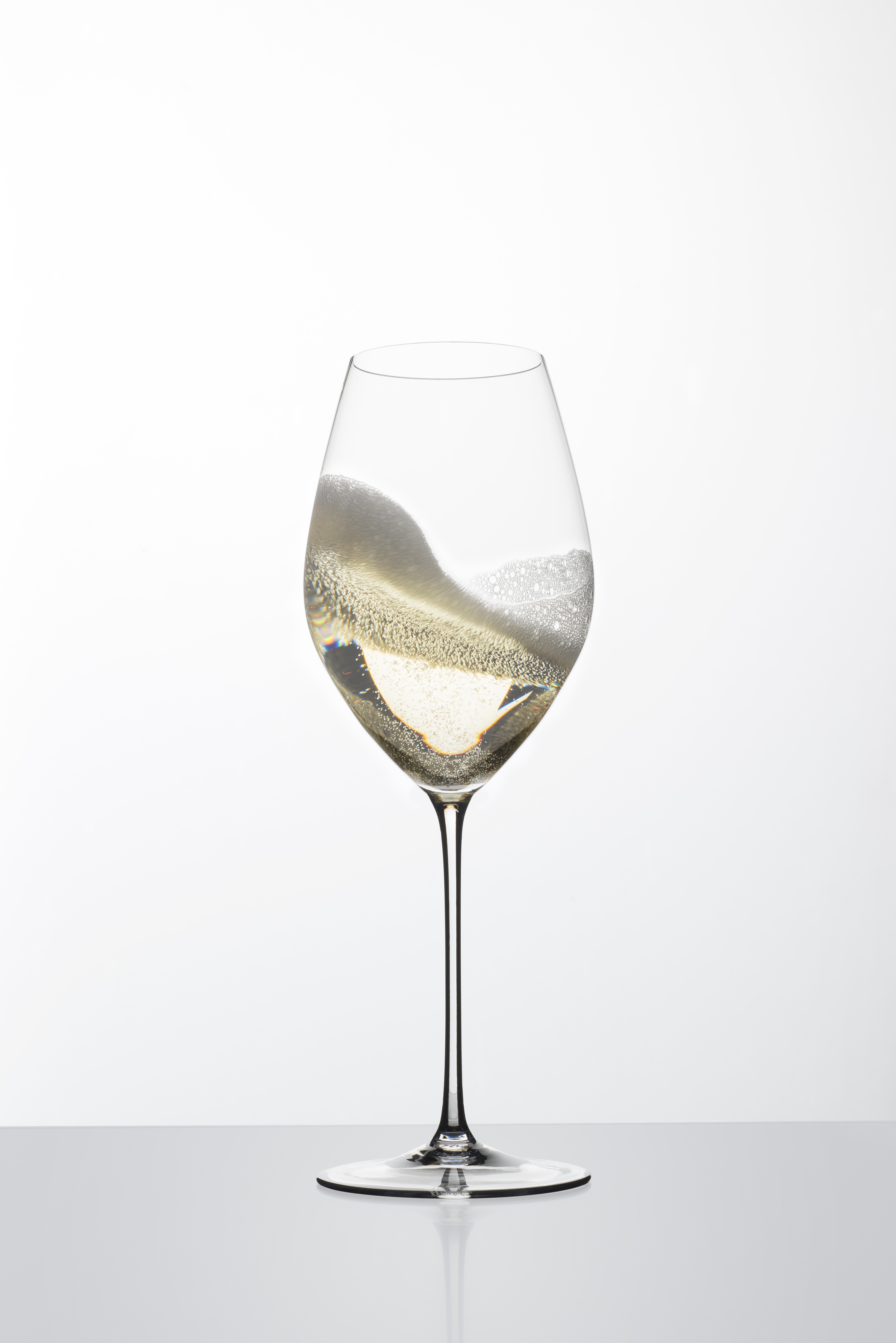
International Sparkling Wines Beyond France
Northern Italy
Italy’s best known Classic Method (Metodo Classico in Italian) sparkling wine is called Franciacorta, located in Lombardy, near the city of Milan. Franciacorta is typically a blend of Chardonnay, Pinot Noir and Pinot Bianco. It is comparable in style to non-vintage Champagne, and most are priced a bit less as well. In addition to Franciacorta, other good examples of Metodo Classico wines include Alta Langa, from Piedmont, and Trentodoc, from Trentino. These wines are made primarily from Pinot Noir and Chardonnay as well. These wines range in price from around $20 to $40 retail.
Spain
Spain’s version of Classic Method wine is called Cava (cellar in Spanish). Most Cava is produced in Penedès, in northeastern Spain, near Barcelona. Cava is made from native Spanish grapes such as Xarel-lo, Parellada and Macabeo as well as French varieties Chardonnay and Pinot Noir, among others. A good bottle of Cava typically retails for well under $20, making this bubbly an excellent value as well.
The Charmat Method
This is another way of making sparkling wine, and produces softer, fruity, frothy wines ranging in style from lightly sparkling (frizzante in Italian) to fully sparkling (spumante in Italian). Sweetness levels vary, from Brut to medium sweet. Look for wines labeled Asti (slightly sweet and spumante) and Moscato d’Asti (medium sweet, frizzante). These are both made from the same grape, Moscato Bianco, in Italian, known as Muscat Blanc in France. Frizzante can also be had in red wine format; one such notable wine is Brachetto d’Acqui,made from the red Brachetto variety not far from the Moscato d’Asti production zone in Piemonte, Italy. These wines are also low in alcohol, 5.5% by volume, making them good choices as brunch wines.
Prosecco
One of the most popular sparkling wine categories today is that of Prosecco, from the Veneto region of northeastern Italy. Stylistically, Prosecco also ranges from frizzante to spumante, and is typically either Brut or Extra Dry (a slight hint of sweetness). Glera is the grape variety, also known simply as Prosecco. Recently, a new production zone has been established within the larger Prosecco region, this area is called Conegliano-Valdobbiadene, named for these two villages. To identify wines from this zone, look for the term Superiore and letters DOCG on the label, indicating higher quality.
United States
A variety of cooler climate regions in the United States produce high quality Classic Method sparkling wines. Coastal California, from Santa Barbara in the south to Mendocino County in the north, is home to many high quality sparkling wines. Stand out regions include Carneros, shared between Napa Valley and Sonoma County, and the Anderson Valley in Mendocino County. Further north, in Oregon’s Willamette Valley, a region with a cool climate often compared to that of Burgundy and Champagne, France, several notable producers are making fresh, clean, crisply acidic bubbly from Pinot Noir and Chardonnay, the best of which is comparable to good Champagne. Most American Classic Method wines are in the $20 to $30 retail range, with some reserve vintage bottlings up to around $50.
Southern Glazer’s has more certified wine experts than any other North American wine and spirits distributor. Its employees have successfully completed more than 5,000 wine, sake and spirits education programs, from introductory to master-level achievements.
These include:
• More than 2,800 Wine and Spirits Education Trust (WSET) wine & spirits certifications;
• 19 WSET Level 3 Awards in Sake;
• 1,600 Level 1 Court of Master Sommeliers®;
• 120 CMS Certified Sommeliers;
• 20 CMS Advanced Sommeliers;
• 14 Master Sommeliers®;
• Over 600 Certified Specialists of Wine (CSW);
• 16 Certified Wine Educators (CWE); and
• 117 Certified Specialists of Spirits (CSS).
There are only 147 Master Sommeliers in North America, and 15 of them work for Southern Glazer’s.

